Cells as the basis of life
1/280
Earn XP
Description and Tags
Name | Mastery | Learn | Test | Matching | Spaced |
|---|
No study sessions yet.
281 Terms
the processes of life (8)
homeostasis
metabolism
growth
reproduction
response
nutrition
excretion
movement
homeostasis
the maintenance of constant internal conditions (e.g. temperature, water concentrations, solute concentrations), despite changes in their external environment
metabolism
the sum of chemical reactions that take place within the cell(s) of an organism; these chemical reactions can be used to synthesize new molecules, digest food, generate energy, etc
growth (3)
growth is quantified by an increase in size and mass of an organism
development is the transformation or change in an organism as it ages
in multicellular organisms, growth can also refer to an increase in the number of cells that make up an organism
reproduction
all life has the capability to create more life
reproduction is either sexual or asexual
response (3)
all life can recognize and respond to changes in the external environment
organisms will have special adaptations to detect these environmental changes
specialized receptors can then initiate the appropriate response from the organism
nutrition (3)
the intake or production of nutrients
heterotrophic organisms obtain nutrients from the external environment
autotrophic organisms are able to produce nutrients from inorganic material
excretion (4)
the removal of metabolic waste products
in humans, excretion primarily occurs through the respiratory system and kidneys
in many plants, excretion occurs via leaves, roots, and stems
in unicellular organisms, excretion occurs through the cell membrane
movement (2)
organisms can be stationary (sessile) or mobile (motile)
all living things have some control over their place and position
what did Linnaeus develop? (2)
he classified organisms into species based on shared morphological (physical) characteristics
developed a naming convention for species known as binomial nomenclature
how to use binomial nomenclature
species are named using both their genus and species names
the genus name comes first—and the first letter is capitalized—followed by the species name in all lowercase
the entire name is put in italics
for example, Homo sapiens
hierarchy of taxonomy (in order of decreasing number of organisms)
domain
kingdom
phylum
class
order
family
genus
species
dichotomous key
it consists of a series of opposing questions about an organism
each question has only two possible answers, stating whether a feature or characteristic is present in the organism or not
each description leads to either another pair of descriptions or an identification
types of variation (2)
discrete (typically qualitative)
continuous (quantitative)
tenets of the cell theory (3)
all living things are made of individual units called cells
cells are the basic unit of life
all cells arise from other cells
why are viruses not considered to be living? (5)
they are not made of cells
they cannot keep themselves in a stable state
they do not grow
they cannot replicate outside the host cell
they cannot perform independent metabolism
organelles that are common to prokaryotic and eukaryotic organisms (4)
plasma membrane
cytoplasm
DNA
ribosomes (70S in prokaryotes, 80S in eukaryotes)
electron microscopes
electron microscopes pass a beam of electrons through a specimen
electrons will be absorbed by the denser parts of the sample, and scattered or able to pass through less dense areas, after which they are picked up by an electron detector and used to form an image
because electrons have a shorter wavelength than light, electron microscopes have a much higher resolution
magnification formula
magnification = image size / actual size
techniques in microscopy (4)
freeze fracture microscopy
cryogenic electron microscopy
immunofluorescence
fluorescent dyes
freeze fracture microscopy (2)
a technique to visualize structures of biological samples which have been frozen, and then broken into small pieces.
this is useful to visualize structures that are not normally visible under the microscope, such as the internal plasma membrane
cryogenic electron microscopy (2)
a technique in which samples are frozen to cryogenic temperatures to fix the molecules to make them more firm
this method improves resolution and reduces damage that may occur from the electron beam.
immunofluorescence (2)
a technique in which a fluorescent tag is attached to antibodies, which bind to antigens on a structure being viewed
when a certain wavelength of light is shone onto the fluorescence tag, the tag will emit light of a different wavelength that can appear as brightly coloured spots, allowing the visualization of the location of target molecules
fluorescent dyes
dyes that preferentially attach to certain structures and appear as brightly coloured spots
the labelled areas will appear as brightly coloured spots, allowing visualization of the target molecule throughout the specimen
conditions of early Earth (6)
early Earth was subjected to bombardment by comets and asteroids, which brought water and other compounds to the planet
methane and ammonia gases were released in these collisions and in the many volcanic eruptions that were occurring; as a result, these two gases formed the majority of the Earth’s early atmosphere
since the early Earth’s atmosphere lacked free oxygen, there was no ozone layer present in the atmosphere.
early Earth was compressed with gravity and experienced radioactive decay; proto-Earth was extremely molten
increased motion within the liquid core would have resulted in a smaller protective magnetic field, which exposed the planet to much higher levels of cosmic and solar radiation
conditions on early Earth would have created extreme weather events, including electrical storms.
early Earth’s reducing atmosphere (3)
due to the lack of oxygen, and the high proportion of reducing gases, including methane and ammonia, the early Earth had a reducing atmosphere
reducing gases in the atmosphere would have been able to donate electrons to other molecules, enabling chemical reactions to take place
reactions resulted in the formation of more complex carbon compounds, including simple amino acids and hydrocarbons
Miller-Urey experiment (5)
attempted to imitate primordial Earth conditions, as it was theorized that early Earth provided the conditions (which do not exist today) necessary for the formation of carbon compounds
water (the “ocean”) evaporated to combine with methane, ammonia, hydrogen gases (the “prebiotic atmosphere”), and sparks (“lightning”) chemically react with the compounds
condenser turns the steam back to water, and the new molecules formed were able to settle
a variety of carbon compounds, including amino acids, were formed from the inorganic compounds; carbon compounds were capable of spontaneously forming on prebiotic Earth
this experiment did not prove that carbon compounds originated in this way, only that it could have happened this way
Oparin-Haldane theory (4)
formation of simple organic molecules from inorganic compounds
assembly of carbon compounds into polymers
the formation of a polymer that can self replicate
packaging of molecules into compartments
why can’t scientists be sure of how cells originated? (4)
cells spontaneously originated a very long time ago, which makes the evolution of cells difficult to study; evidence may become destroyed or distorted
the very first protocells did not fossilize
cells may have originated deep in the ocean, making it challenging to reach and collect samples for analysis
uncertainty surrounding the exact conditions on prebiotic Earth, which means scientists cannot replicate the exact conditions that would have existed
steps of the RNA first hypothesis (7)
RNA was formed from inorganic sources
RNA was able to replicate using ribozymes (RNA molecules capable of acting as catalysts and increasing the rates of chemical reactions)
RNA was able to catalyze protein synthesis
Membrane compartmentalization occurred
Inside the cell, RNA was able to produce both protein and DNA
DNA took over as the main genetic material because it is more stable due to:
deoxyribose makes DNA more chemically stable than chains of RNA
hydrogen bonds in DNA adds stability
use of thymine rather than uracil; thymine is less susceptible to mutation
Proteins took over as the catalytic form (enzymes) because they are more capable of variability
evidence to support RNA first hypothesis (3)
short RNA sequences have been shown to be able to duplicate other molecules of RNA (sometimes with slight mutations), demonstrating that RNA can self-replicate
RNA has some catalytic activity, so it may have acted initially as both the genetic material and enzymes of the earliest cells
ribozymes in the ribosome are still used to catalyze peptide bond formation during protein synthesis
other hypotheses about how cells originated other than RNA first (4)
Miller-Urey hypothesis: spontaneous generation of simple organic molecules (e.g. amino acids, carbohydrates, lipids) occurred due to conditions on prebiotic Earth
metabolism first hypothesis: life began with simple metabolic reactions that led to the formation of metabolic pathways, which formed complex molecules, forming the basis of cells
sulfur world hypothesis: the first forms of life were based on iron-sulfur chemistry
lipid world hypothesis: lipid bilayers evolved before RNA, providing a protective layer to encapsulate the RNA
spontaneous formation of vesicles (4)
early cell membranes may have formed from fatty acids, which are structurally much simpler than phospholipids and may have formed more readily in a prebiotic environment
each fatty acid is a hydrophobic hydrocarbon chain with a hydrophilic carboxyl group attached to one end
in a watery solution, fatty acids will spontaneously form spherical structures called micelles; the shape of the micelle tucks hydrophobic tails together
because of the physical separation, the interior of the membrane would then have been able to provide a chemical environment with a different chemistry to the external environment
last universal common ancestor (LUCA)
it is likely that more than one life form spontaneously originated under the conditions present on early Earth, but only one of these life forms gave rise to all of the species existing since and today
it is theorized that LUCA was a simple, unicellular autotrophic microbe with an RNA genome that existed between 2.5 and 3.5 billion years ago
chemical evidence for LUCA
by looking at the half lives of particular isotopes, we can find the earliest evidence of life
for example, when examining the remains of prehistoric autotrophs, if traces of carbon-12 are found, we know that the organism must have been photosynthetic, and therefore existed during or after the Great Oxygenation Event
biomarkers as evidence for LUCA
stromatolites are structures created by photosynthetic bacteria that live in shallow water; as they become covered in clay and particles, the bacteria move upward toward the light
movement traps and binds sediments into layers
fossil evidence for LUCA
biomarkers are the molecular fossils of macromolecules and organic compounds
encased in sedimentary rocks, these molecules can remain intact over hundreds of millions of years
lipids generally preserve better compared to other macromolecules
genetic evidence for LUCA
perhaps the most telling piece of evidence
the genetic code is universal as it is shared by all living organisms and viruses on Earth due to common ancestry of all living organisms from one LUCA
universality and conservation means that scientists can use the genetic code as a tool to study when differences in the genome of groups of organisms evolved
the number of differences in the genomes of two species is proportional to the time since they diverged from a common ancestor
features and characteristics of LUCA
existed between 2.5 and 3.5 billion years ago
existed deep in the ocean in alkaline hydrothermal vents that were rich in hydrogen and dissolved minerals (including sulfur, methane, iron) which could have been used by LUCA as an energy source
hydrothermal vents are fissures in the ocean floor through which mineral rich water escapes; hydrothermal vents are thought to have provided LUCA physical protection from the external ocean
hydrothermal vents have high temperatures, which could have provided energy necessary for formation of organic molecules required for cellular formation
was anaerobic (does not require oxygen for cellular respiration), which fits with the lack of oxygen in the early atmosphere of the Earth
was autotrophic, combining inorganic carbon with hydrogen, to produce carbon dioxide and formic acid, which could then be used for other processes
components of prokaryotic cells
PILI: enables the cell to attach to surfaces, swap DNA with other cells and harpoon DNA in the environment
CAPSULE: helps the cell keep from dehydrating and adhere to surfaces
FLAGELLUM: long extensions used in cell locomotion
NUCLEOID: the main DNA of the cell, found in a single loop in the cytoplasm; “naked” as the DNA is not associated with histone proteins
PLASMID: extra pieces of DNA (not in all prokaryotic cells)
circular and naked
smaller and replicates independently of the nucleoid
can be shared between bacteria through horizontal gene transfer
since DNA is more accessible, more prone to damage and mutation
70S RIBOSOMES: where translation (protein synthesis) occurs
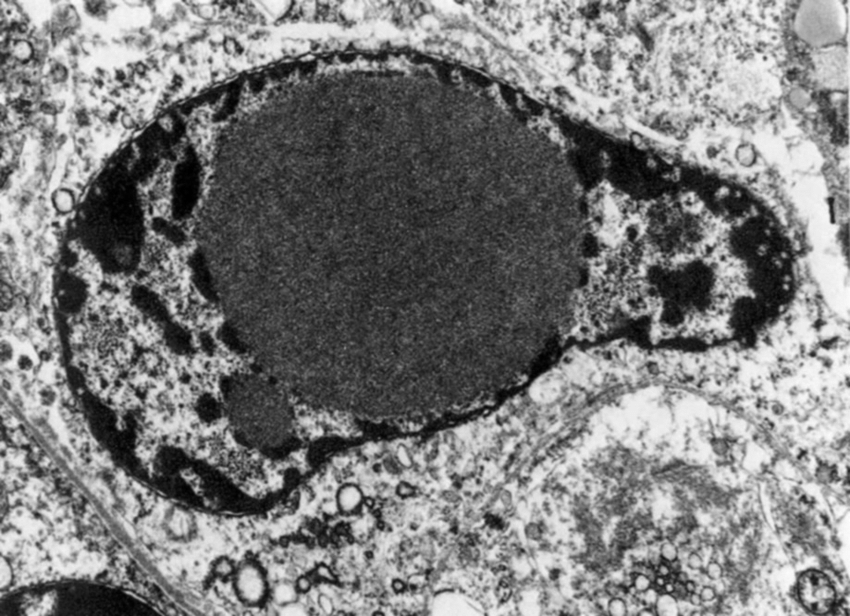
nucleus
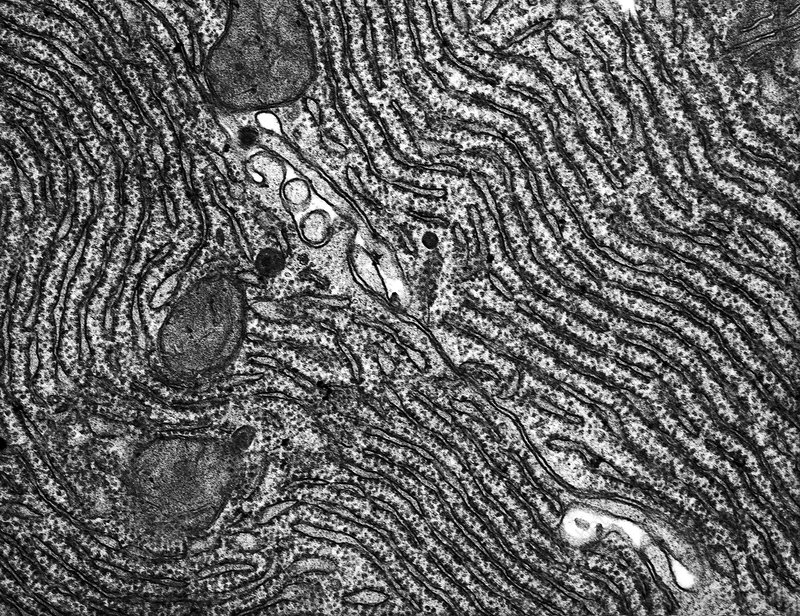
rough ER
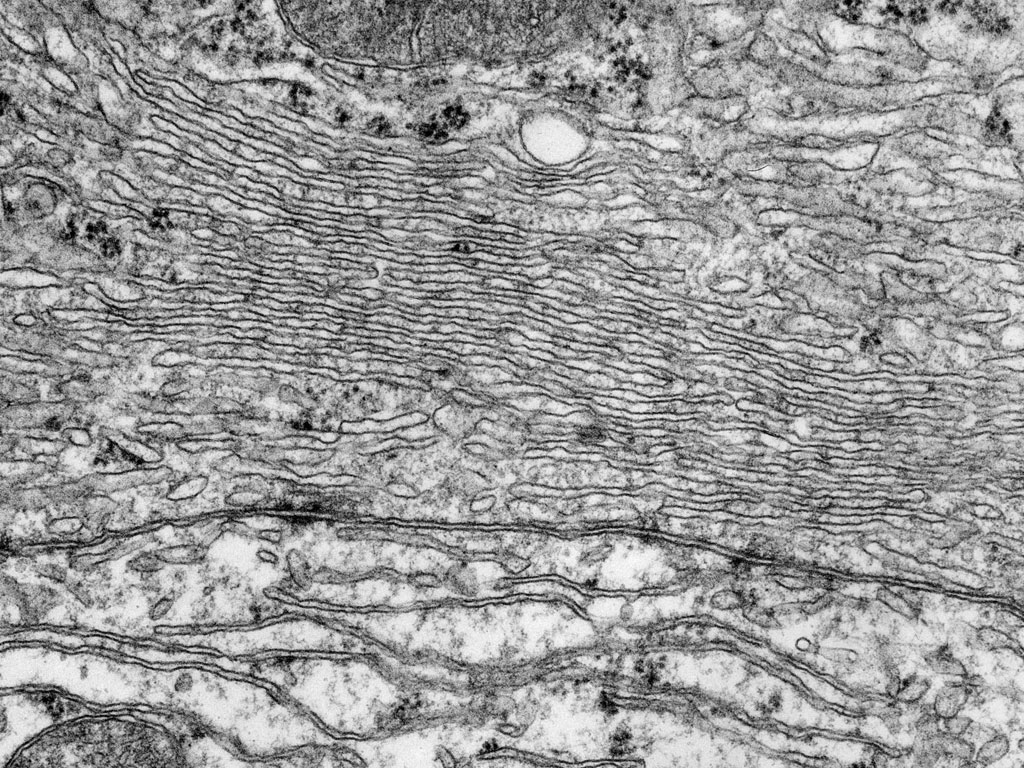
smooth ER
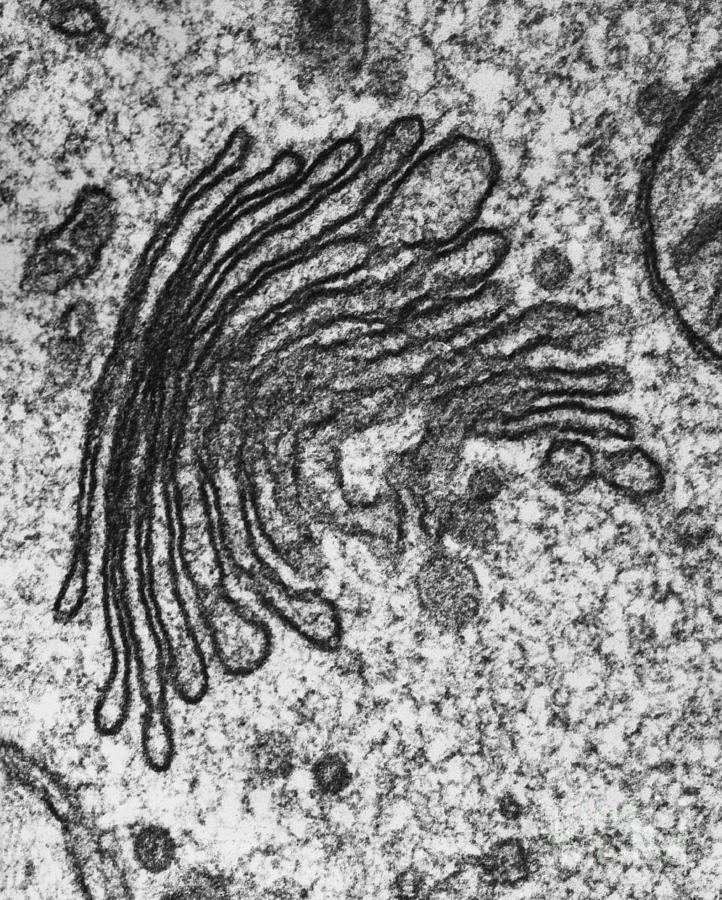
Golgi apparatus
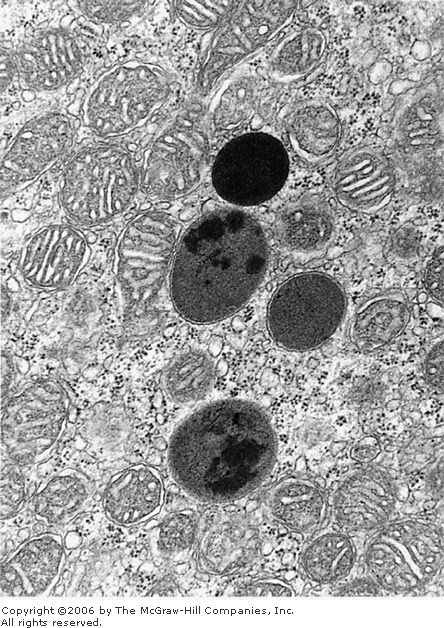
lysosome

mitochondria
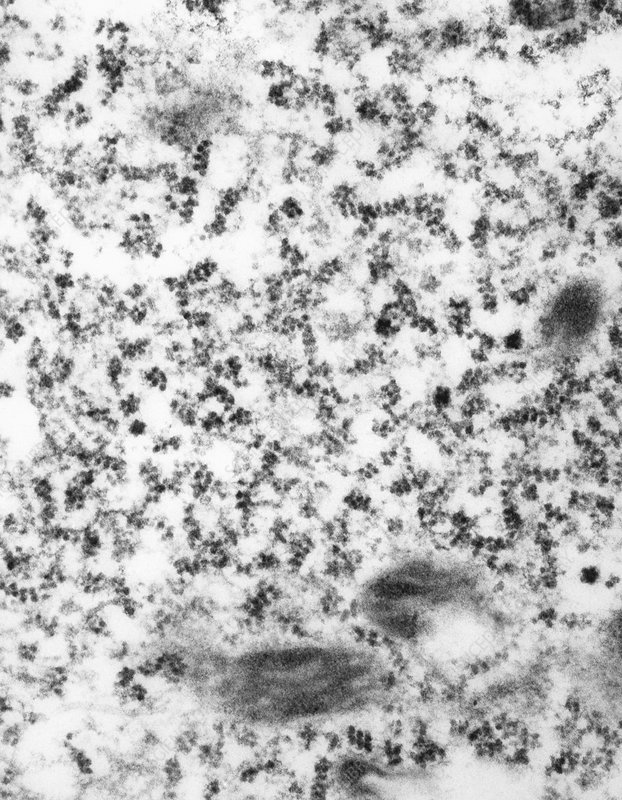
free ribosomes
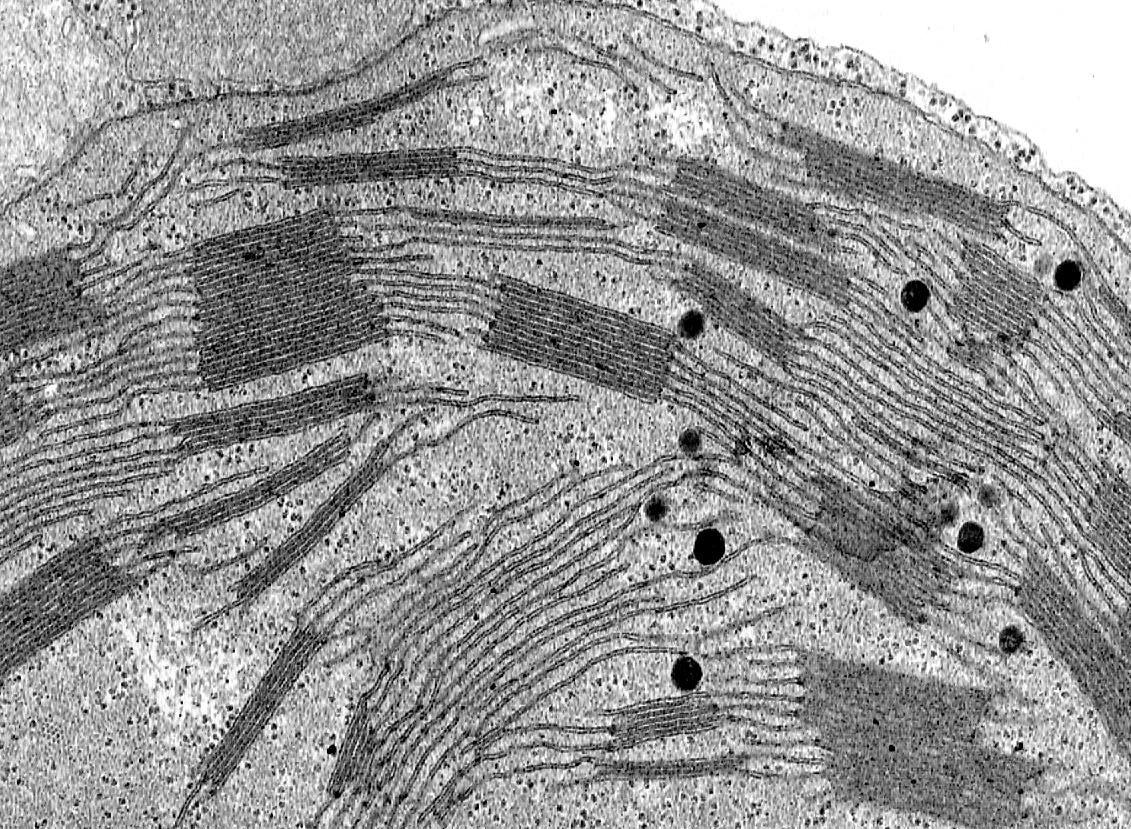
chloroplast
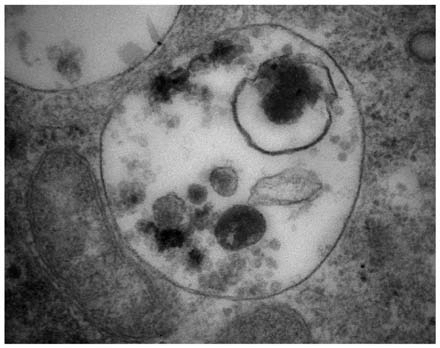
vacuole
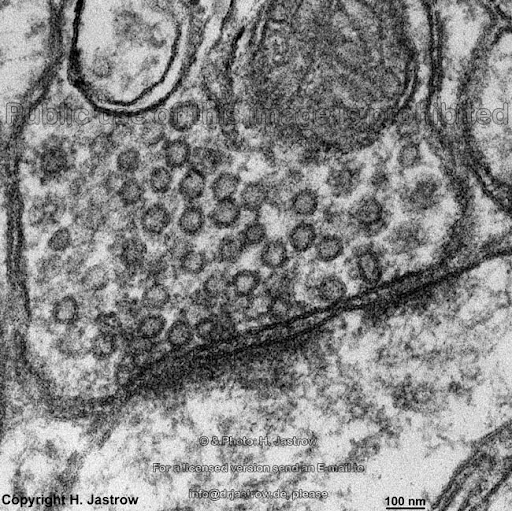
vesicles
in secretory cells, they can be distinguished from lysosomes by the fact that they may be clumped towards one side
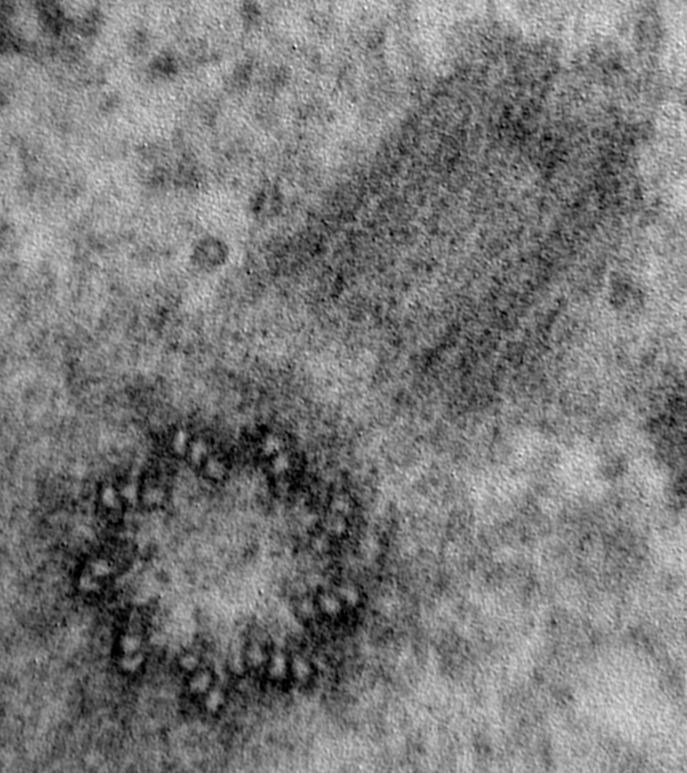
centriole
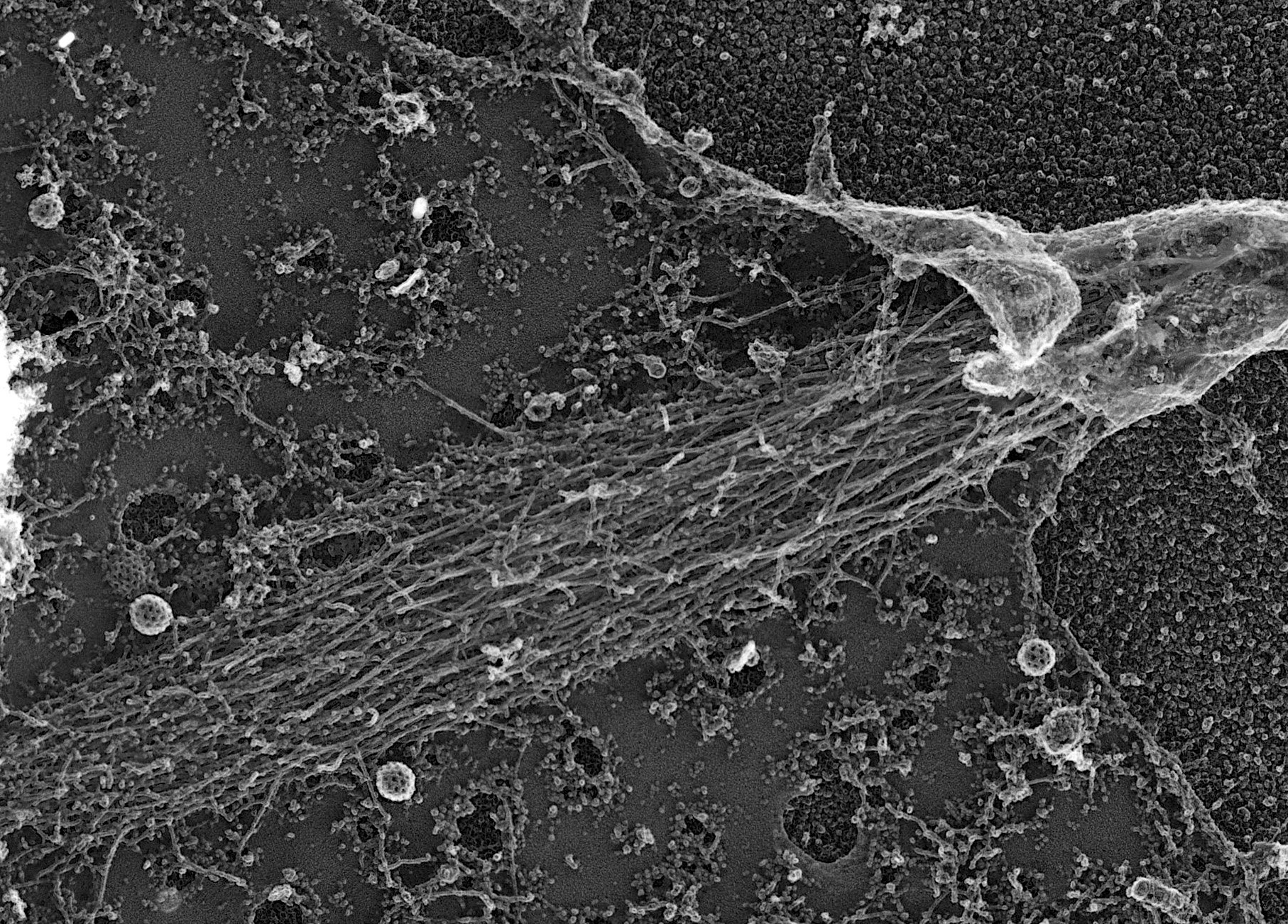
cytoskeleton
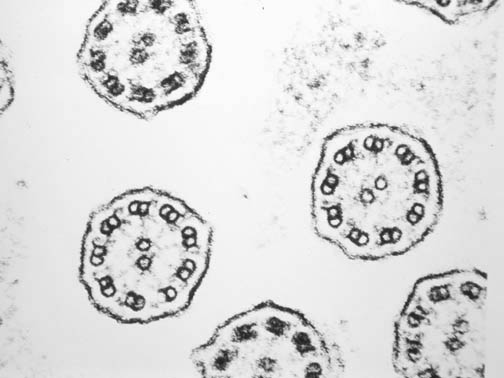
cilia

flagella
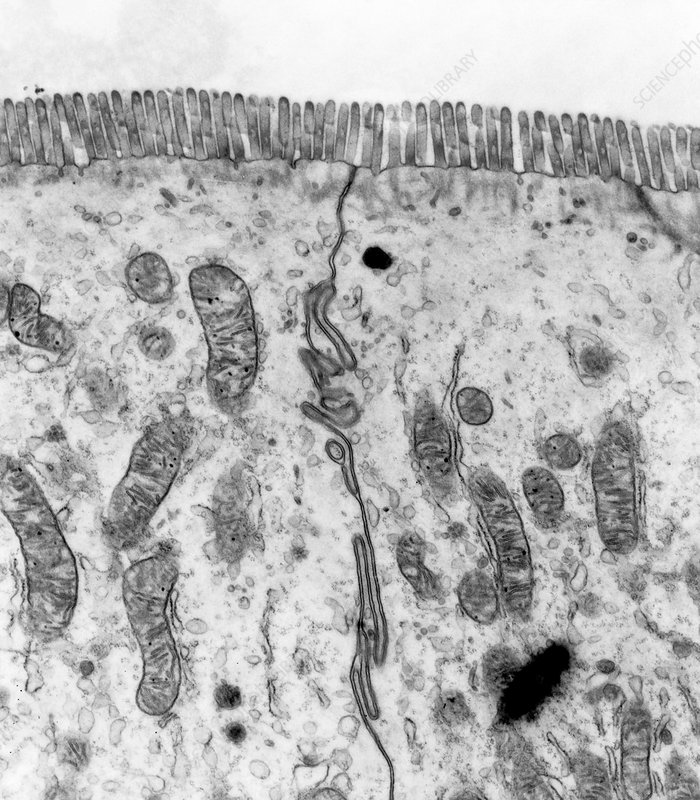
microvilli
different types of oxygen needs (3)
OBLIGATE AEROBES: require continuous oxygen supply, so only live in oxic environments
OBLIGATE ANAEROBES: inhibited or killed by oxygen, so only live in anoxic environments
FACULTATIVE ANAEROBES: use oxygen if available, so can live in either oxic or anoxic environments
obligate aerobes (2)
organisms that produce ATP through aerobic cellular respiration
oxygen serves as the final electron acceptor in the electron transport chain
obligate anaerobes (5)
organisms that produce ATP via anaerobic cellular respiration or fermentation
killed by atmospheric levels of oxygen, as they lack the enzymes needed to break down toxic forms of oxygen
ANAEROBIC RESPIRATION: uses an electron acceptor other than oxygen (e.g. sulfate, nitrate, iron) in the electron transport chain
FERMENTATION: doesn’t use an electron transport chain; e.g. lactic acid fermentation, alcoholic fermentation
many anaerobic bacteria are important for human digestion for breakdown of materials.
facultative anaerobes (4)
produce ATP via aerobic cellular respiration, anaerobic respiration, and/or fermentation
since they can survive in many different environments, facultative anaerobes can easily adapt to changing conditions
grow better in aerobic conditions as they give much higher yields of ATP than fermentation
most life-threatening pathogenic bacteria are facultative anaerobes.
characteristics of archaea not found in bacteria (4)
cell membrane has branched fatty acids with unique bonding of the fatty acid to glycerol
peptidoglycan is the component of bacterial cell walls whereas polysaccharides make up the archaeal cell walls
their genomes are larger and more complex than those of bacteria
many are extremophiles (living in conditions hostile to most other forms of life on Earth)
ways that archaea obtain energy (2)
PHOTOAUTOTROPHS: obtain energy from light
pigments other than chlorophyll are used
in this form of “photosynthesis” their photosynthesis does not generate oxygen
rather than an electron transport train, light-activated ion pumps generate ion gradients
CHEMOAUTOTROPHS: obtain energy from the oxidation of inorganic chemicals
often inhabit extreme habitats
can use inorganic energy sources, including hydrogen sulfide, iron (II) compounds, molecular hydrogen, and ammonia to produce energy
this form of energy acquisition is considered one of the oldest on Earth
compartmentalization
the organization of different functions and processes within specific areas or structures within the cell that are separated by plasma membranes
advantages of compartmentalization (4)
enzymes (reactant catalysts) and metabolites (“reactants” for metabolism) can be concentrated in a small space, increasing the chance for collision between the active site and substrate
substances that damage cells can be isolated within a membrane
conditions, such as pH, can be maintained at an optimal value for a particular reaction
large areas of membrane can become dense with proteins for a specific process
organelles with no membrane (3)
not enclosed by a phospholipid bilayer solids
ribosomes, centrioles, nucleolus
organelles bound by a single membrane (6)
sacs enclosed by a single phospholipid bilayer
vesicles and vacuoles, rough ER, smooth ER, Golgi apparatus, lysosomes
organelles bound by a double membrane (3)
structures enclosed by two phospholipid bilayers
nucleus, mitochondria, chloroplasts
cellular structures that do not qualify as organelles (3)
cell wall: as it is extracellular, it is not an organelle; also not involved in metabolic processes
cytoplasm: not specialized to perform a specific function
cytoskeleton: filaments and tubules that make up the cytoskeleton do not qualify it as a discrete structure; also not involved in metabolic processes
lysosomes for compartmentalization (3)
lysosomes contain a high concentration of enzymes capable of hydrolyzing all types of biological polymers (including proteins, nucleic acids, carbohydrates, lipids)
internal conditions of lysosomes are highly acidic, with a pH of 5; this contrasts with the neutral pH of the cytoplasm
lysosomal enzymes are acid hydrolases; these enzymes would be rendered inactive in the case that a lysosome’s membrane broke down, thus protecting the cytosol
phagocytic vacuoles for compartmentalization (3)
particles are brought into the cell in by phagocytic vacuoles to be “consumed” by lysosomes
the breakdown of waste in cells requires the use of potentially damaging enzymes
isolating these enzymes in the phagocytic vacuoles protects the rest of the cell and allows the waste to be broken down safely
nucleus for compartmentalization (4)
the double membrane of the nucleus serves as a barrier between the genetic material inside the nucleus and the rest of the cell
inner membrane controls entry and exit of molecules involved in regulation of gene expression
nuclear pore complexes have selective passageways that allow small polar molecules, ions, and macromolecules to travel between the nucleus and cytoplasm; also serve as channel proteins that regulate mRNA leaving the nucleus
during prophase, nuclear membrane breaks down into small vesicles, held together by dimers (small polymers) and lamin (structural proteins); membrane is reassembled in telophase
process is critical for maintaining integrity of genetic material
nucleus structure and function (3)
has a double membrane with pores, allowing cells to separate gene transcription and translation
contains the DNA, which stores information for making proteins via transcription and translation
contains the nucleolus, where ribosome subunits are made
ribosome structure and function (4)
made from dozens of proteins arranged on a scaffold of ribosomal RNA
ribosomes have binding sites to which mRNA and tRNA bind during translation; causes the flow of information to go from DNA to mRNA to a protein
the mRNA that codes for proteins that need to be exported outside of the cell is transcribed in the nucleus with an ER signal sequence (a short sequence on a protein that directs the protein towards the ER)
proteins for use inside the cell do not have this sequence in their mRNA; allows the cell to direct proteins to correct locations, which depends on the protein’s function
types of ribosomes
free (floating in cytoplasm): synthesizes polypeptides used in the cell
bound (attached to the cytosolic side of the rough ER): synthesizes polypeptides secreted from the cell to become proteins in the cell membrane
rough ER structure and function
a series of flattened membranous sacs that play a central role in the synthesis and transport of polypeptides; continuous with nuclear membrane
smooth ER structure and function (3)
composed of a series of connected flattened membranous sacs continuous with the rER
lacks ribosomes and is not involved in protein synthesis
synthesizes phospholipids and cholesterol; both are used for membrane repair and synthesis
Golgi apparatus structure and functions
The Golgi apparatus is composed of flattened membrane-enclosed sacs called cisternae.
The Golgi sorts, concentrates, and packs proteins into vesicles. Vesicles are dispatched to one of three places:
within the cell to organelles, (e.g. lysosomes)
plasma membrane
secretion to outside of the cell via exocytosis
Vesicles fuse with the cis compartment membrane and release the protein inside the Golgi. Proteins for use within the cell (e.g. lysosomes) are transported to the medial compartment to undergo further modification. Proteins destined for export outside the cell are transported to the trans compartment.
ways for polypeptides to move through Golgi apparatus (2)
cisternal maturation model: layers of membrane gradually mature and progressively move through the Golgi in the trans direction
vesicle transport model: buds off at layers
lysosome structure and functions (4)
small, spherical organelles enclosed by a single membrane
contain enzymes that work in oxygen-poor areas and lower the pH
enzymes in lysosomes digest large molecules to degrade and recycle components of the cell’s own organelles when they are old or damaged
lysosomes also have an immune defence function, as they digest pathogens that have been engulfed by phagocytes
formation of vesicles (3)
formation of vesicles is achieved through endocytosis; the most common type is called clathrin mediated endocytosis
clathrin forms a skeleton around the newly formed vesicle, and forms with another protein, dynamin, and wraps around the base of the vesicle and pinch off a piece of the membrane to form a vesicle
once the vesicle forms, the clathrin coat breaks down through hydrolysis, back into individual pieces
types of vesicles (2)
transport vesicles: move molecules between locations inside the cell
secretory vesicles: secrete molecules from the cell via exocytosis; this is how new phospholipids are added to the cell membrane
functions of vesicles (2)
transport: of integral membrane proteins (e.g. pumps channels, adhesion proteins, receptor proteins)
cell membrane growth: phospholipids used to form vesicles are added to the accepting membrane
mitochondria structure and function
surrounded by a double membrane
adapted for production of ATP, for aerobic cellular respiration
chloroplast structure and function
belong to a group of organelles called plastids
responsible for the green colour of plants
adapted for photosynthesis
vacuole structure and function
central vacuoles of plants occupy 30%-90% of the cell
in addition to water storage, the main role is to maintain turgor pressure against the cell wall
cytoskeleton structure and function
includes microtubules, actin filaments, and intermediate filaments
helps cells maintain their shape, organize cell parts, and enables cells to move and divide
microtubules structure and function
microtubules are polymers of a protein called tubulin
form part of the cytoskeleton
used for intracellular transport of organelles and separation of chromosomes during mitosis
centriole structure and function
centrosomes are composed of a pair of centrioles
responsible for the arrangement of the mitotic spindle during cell division
serve as an anchor point for microtubules and for cilia and flagella
cilia and flagella structure and function
cilia and flagella are extensions from the cell surface
formed from modified centrioles called basal bodies
used to aid cell movement
while cilia beat in coordination with each other, flagella move independently of each other
animal kingdom (3)
multicellular eukaryotes without a cell wall, as cell walls are too rigid to allow fluid movement
all are holozoic, meaning that they eat other organisms with internal digestion of nutrients
the largest kingdom, with a million known species; number of known species is likely due to human bias toward studying animals
fungus kingdom (4)
eukaryotes with a cell wall made of chitin
can be unicellular or multicellular
most are saprotrophs; they don’t perform digestion inside their cell
rather, they release digestive enzymes in the environment and suck up the nutrition afterward
fungi are the primary decomposers in ecological systems
plant kingdom (3)
multicellular eukaryotes with a cell wall made from cellulose
cellulose is a molecule that is hard to break down; thus, in humans, there are bacteria in the gut biome that are used to help digest cellulose
with just a few exceptions, plants are autotrophs
there are an estimated 300 000 known species of plants
differences in organelles between kingdoms: plastids
not in animal or fungus kingdom
in plants, including chloroplasts for photosynthesis
differences in organelles between kingdoms: cell wall
not in animal kingdom
in fungi, composed of chitin and other molecules
in plants, primarily composed of cellulose
differences in organelles between kingdoms: vacuole
in animals, small, temporary structures that expel excess water or other waste products
in fungi and plants, large, permanent organelle used to store water to cause turgor pressure
differences in organelles between kingdoms: centrioles
in animals, used to arrange mitotic spindle during mitosis and as anchor points for cilia and flagella
not in fungi
in plants, present in male gametes of moss and ferns, absent in all conifers and flowering plants
differences in organelles between kingdoms: cilia + flagella
in animals, present in many animal cells, including male gamete
in fungi, absent from most fungi, except a small number that have a swimming male gamete
in plants, present in male gametes of moss and ferns; absent in all conifers and flowering plants
atypical cells (4)
skeletal muscle fibre
red blood cells
aseptate fungal hyphae
phloem sieve tube element
multinucleated cells: skeletal muscle fibre
multinucleated because the muscle cell has formed from many smaller myocytes (muscle cells) that have fused together
anucleate cells: red blood cells
during their maturation, red blood cells discard their nucleus and mitochondria cells become small to increase surface area to volume ratio for efficient gas exchange and the ability to move through narrow capillary vessels
multinucleated cells: aseptate fungal hyphae
aseptate hyphae in fungi do not have the cellular partitions that are normally present, and so there are many nuclei in a single unit; thus, they are considered to be multinucleated